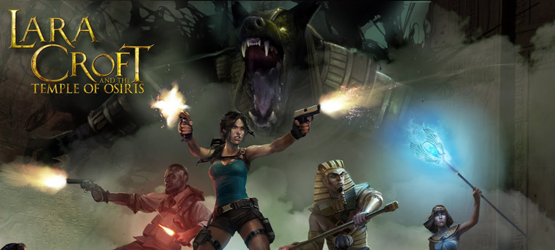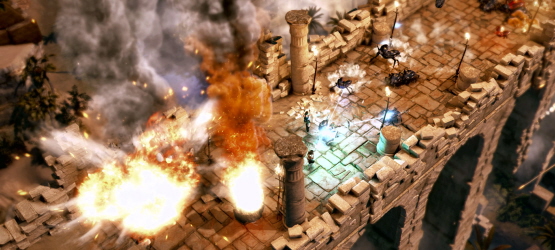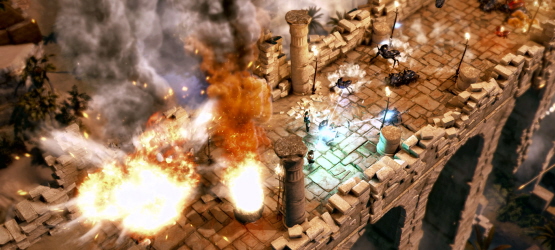
We’ve already seen that the Lara Croft series translates well to the isometric action genre of games. With platform exclusivity out of the way this time around, can the venerable Croft provide for some fun entertainment?
Get Ready
If you’ve played The Guardian of Light, then you’ll feel right at home in Tower of Osiris. You move with the left stick, aim with the right, pull R2 to shoot, use the directional buttons to choose a weapon, and perform a few other actions such as jumping and slingshotting. Controls are pretty tight, and any death you encounter is usually due to your own poor performance. With an isometric viewpoint, occasionally it can become difficult to jump correctly, but thankfully most level layouts are well-designed, with few tight corridors.
There’s a story here, but it’s pretty light. Something about awakening old Egyptian Gods and whatnot. It’s a similar plot to The Guardian of Light, where you play Lara as an assistant to a God. The story mostly serves as a filler to take you from level to level. Really, aside from Diablo III, you don’t usually play these kinds of games for their story. There’s a couple of decent jokes here and there, but for the most part you’re simply Lara moving throughout ancient ruins, collecting gems and stomping the undead.

Get Shiny
Throughout your adventure, you’ll find gems of varying value. Collect enough of them, and you can cash in for a fancy new ring! Or amulet. Or some other artifact that enhances your character in some way. Of course, for every beneficial attribute an artifact bestows upon you, it also has its drawbacks. Some rings will grant you fire resistance, while decreasing your weapon damage. Others will increase your weapon damage, but decrease your explosion damage resistance. You can wear two rings and two amulets simultaneously, so finding a combination where each piece of jewelry balances out one another is ideal.
Co-op is here, with support for up to four players, online and on the same system. Player 1 is Lara, and Player 2 gets the staff that is often key to many of the game’s puzzles. Working together is, as is often the case, much more fun than playing alone. The story progresses along whether you’re playing alone or not, but it appears some levels change slightly to accommodate if you’re playing solo or with friends. Isometric games lend themselves well to single-screen multiplayer. There are also community challenges, and if the community is successful at destroying X amount of scarabs or some other arbitrary goal, then a prize is delivered to the community chest back in your game’s hub.

Get Spelunking
From a technical standpoint, you can’t expect a whole lot from an isometric game. Tower of Osiris delivers a mostly-steady frame rate, though it does have an occasional slowdown when there are dozens of enemies onscreen. The game certainly looks the part, with rubble scattered throughout the ruins you find yourself in, and a palette change when you enable a day/night cycle a bit ways into the adventure. There’s nothing particularly hi-res about the game’s character models or textures, which makes the slowdown that it does encounter kind of confusing, but it doesn’t look bad or boring by any means.
It’s simple – if you enjoy Diablo-esque action mixed with a hefty dose of ruin spelunking, then this is the game for you. What’s more, The Tower of Osiris provides for much more fun when you’re in a group. While the puzzles aren’t particularly challenging, the inclusion of adaptive levels based on the number of players is much appreciated.
Review copy was provided by the publisher. For information on scoring, please read our Review Policy here.
-
Easy to pick up and play
-
More fun with friends!
-
Lots of loot to collect
-
Generic story
-
Average graphics, frame drops








